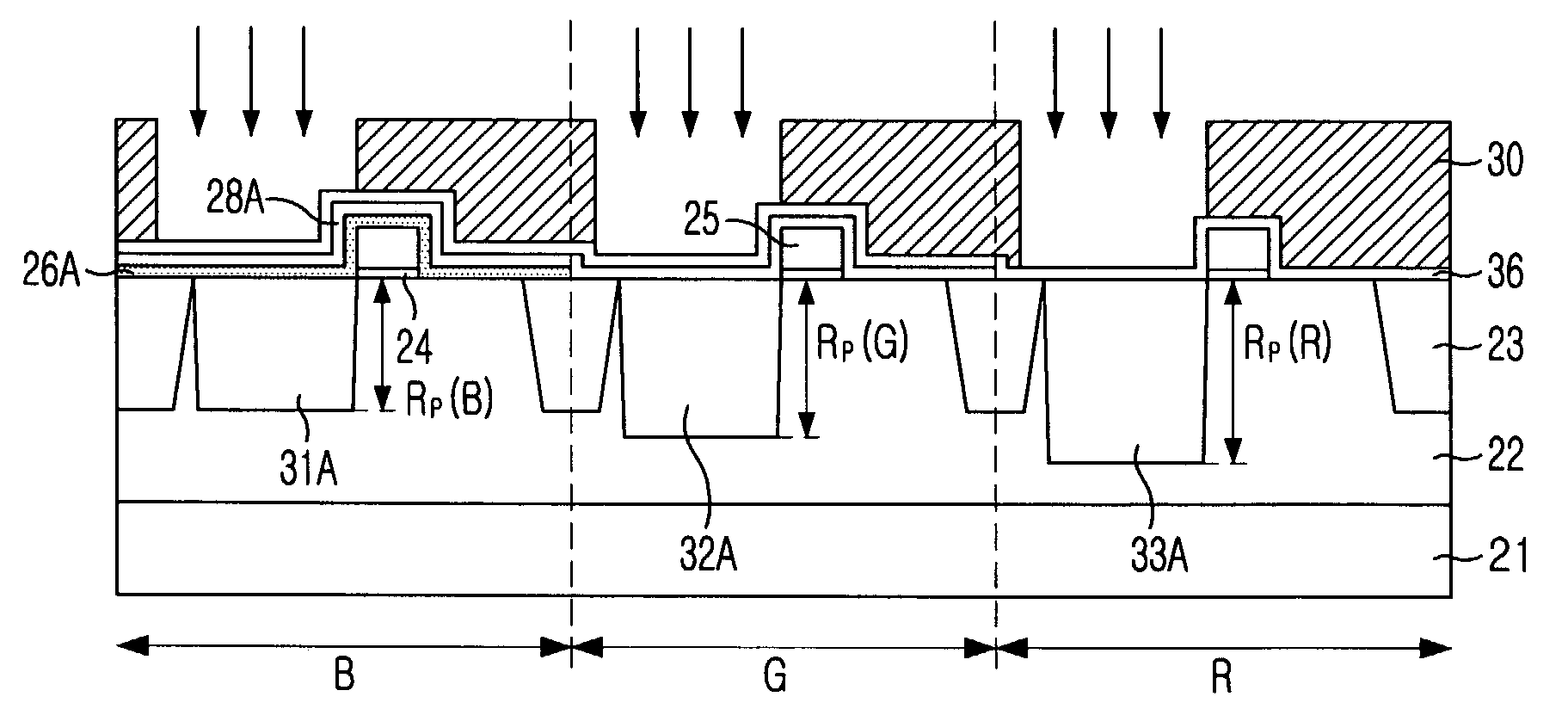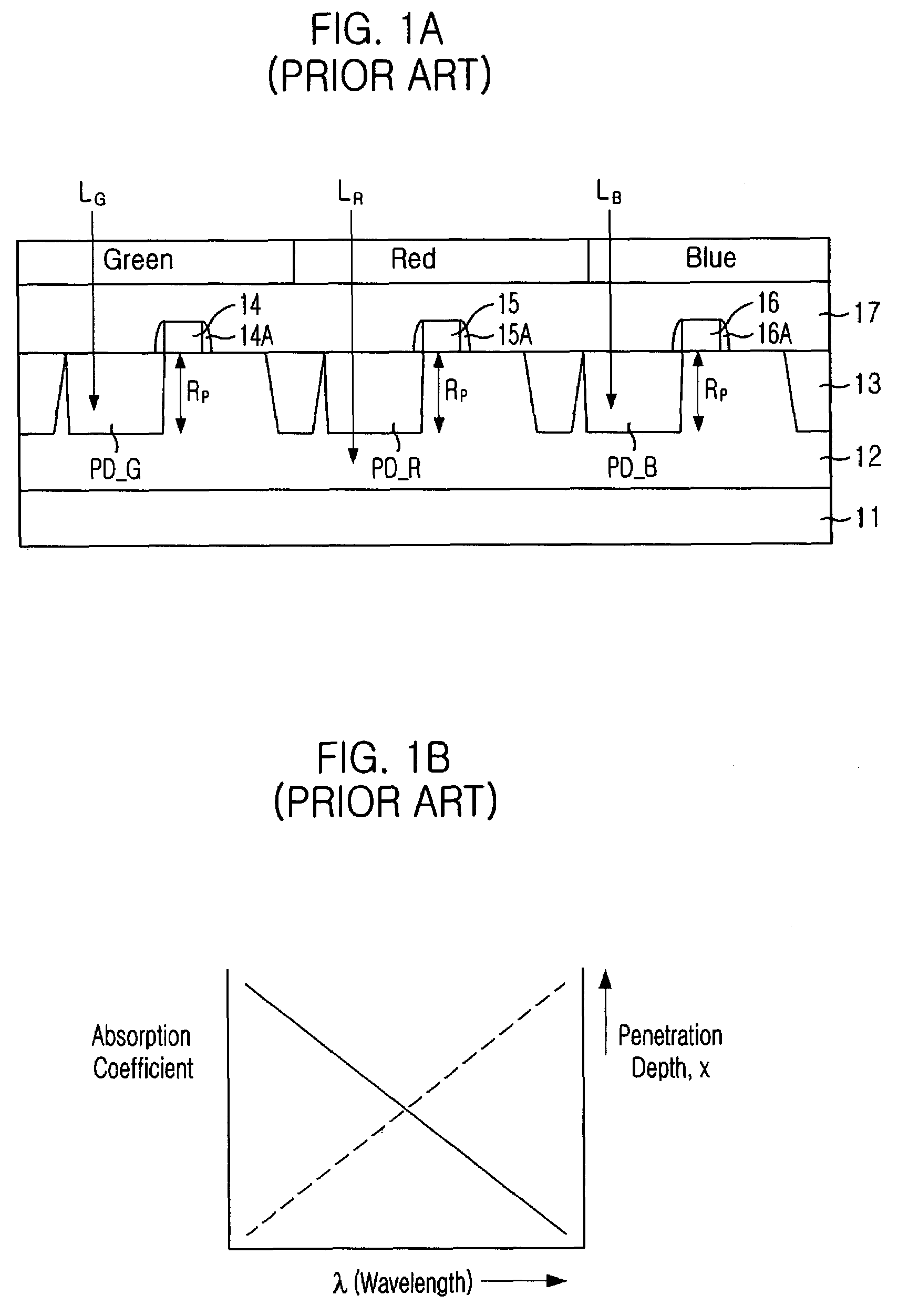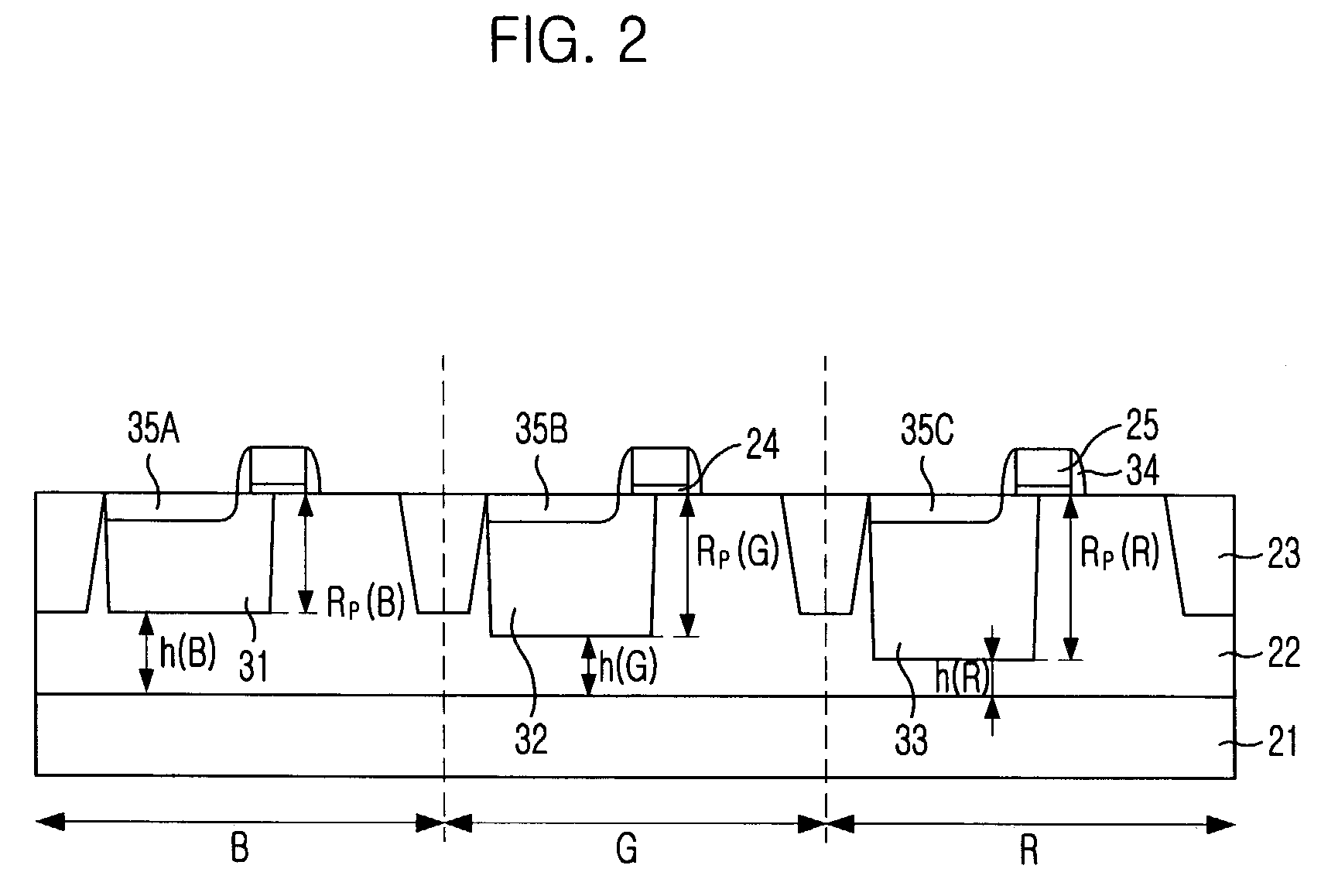CMOS image sensor including photodiodes having different depth according to wavelength of light
a photodiode and image sensor technology, applied in the field of image sensors, can solve the problems of red signal outputs substantially decreased, red signal imbalance, cross-talk phenomenon, etc., and achieve the effect of preventing the cross-talk phenomenon
- Summary
- Abstract
- Description
- Claims
- Application Information
AI Technical Summary
Benefits of technology
Problems solved by technology
Method used
Image
Examples
Embodiment Construction
[0023]FIG. 2 is a cross-sectional view showing a unit pixel of a CMOS image sensor in accordance with a preferred embodiment of the present invention.
[0024]Referring to FIG. 2, a low concentration of a p-type epi layer 22 is grown on a p-type substrate 21 doped with a high concentration-of a p-type dopant. A field oxide layer 23 is formed on a predetermined portion of the p-type epi layer 22. The field oxide layer 23 defines a blue color region B, a green color region G and a red color region R.
[0025]A photodiode receiving blue light and having a range of projection (Rp) that is blue (Rp(B)) is formed within the blue color region B of the p-type epi layer 22. Similarly, a photodiode receiving green light and having an Rp that is green (Rp(G)) is formed within the green color region of the p-type epi layer 22. A photodiode receiving red light and having an Rp that is red (Rp(R)) is also formed within the red color region of the p-type epi layer 22.
[0026]With respect to the photodiode...
PUM
 Login to View More
Login to View More Abstract
Description
Claims
Application Information
 Login to View More
Login to View More - R&D
- Intellectual Property
- Life Sciences
- Materials
- Tech Scout
- Unparalleled Data Quality
- Higher Quality Content
- 60% Fewer Hallucinations
Browse by: Latest US Patents, China's latest patents, Technical Efficacy Thesaurus, Application Domain, Technology Topic, Popular Technical Reports.
© 2025 PatSnap. All rights reserved.Legal|Privacy policy|Modern Slavery Act Transparency Statement|Sitemap|About US| Contact US: help@patsnap.com



